E) Munich's 'Oktoberfest'
Even though it is called 'Oktoberfest', the festival actually takes place in September, as Bavarian autumn can be tricky and surprise with early cold and snow. Today, the 'Oktoberfest' is the largest festival worldwide attracting a multitude of visitors. Apart from beer tents the festival offers amusements as diverse as roller coasters, circus appearances, festive parades and live brass bands.
The ceremonial opening happens at noon. The mayor arrives in a festive coach followed by a decorated horse-drawn brewer's cart. Guests, staff and the numerous brass bands are all wearing traditional costumes (lederhosen and dirndls) for the occasion. At the end of the parade the major taps the first keg of beer and shouts, "o'zapft is!" (The keg is tapped).
It takes good nerves and a solid stomach to survive the festivals 16 days of intensive partying. However, the festival is a huge success: Apart from attracting a multitude of visitors the festivals brand name 'Oktoberfest' has been exported all over the world.
4.2. National Parks
A) The Jasmund National Park
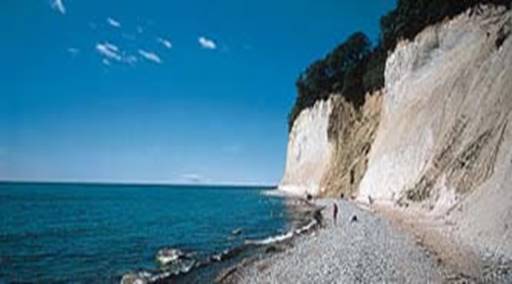
The Jasmund National Park offers many different landscapes within a very small area. Come and visit a cretaceous landscape with numerous bogs, wet grasslands and dry meadows. The most renowned attraction are the chalk cliffs surrounding the Königsstuhl which have been captured in paintings by the famous artist Caspar David Friedrich.
Apart from the Königsstuhl, the highest point on the chalk coastline, the whole length of the chalk coastline is impressive. It stretches over a length of 10 km, reaches a height of 117 m and consists of both active and inactive cliffs, illustrating the dynamics of an active steep coastline.
The national park offers a wide range of activities, such as hiking and bicycle tours, excursions and seminars which give the opportunity to explore the most beautiful hiking trails through the region´s forested landscapes.
The Stubnitz area
is not just worth a visit because of its magical chalk landscape, it is also the home of mythical figures.
On guided tours, organised on a regular basis by the national park administration, you will find out everything about Hertha, a Germanic goddess, and Störtebecker, a pirate who is said to have buried treasure somewhere in this area.
Highlights:
- Cape Arkona with the little town of Vitt
- the fishing port of Sassnitz with its fishing museum
- "Piratenschlucht" (pirate´s gorge) in Sassnitz
- Greifswald's museum with an exhibition of paintings by Caspar David Friedrich
- historic craftsmen's dwellings in Gingst
- Grümbke lookout tower near Neuenkirchen
Activities:
Jasmund offers a wide range of guided tours (daily tours take place from April - September, both from the parking lot in Hagen to the Königsstuhl and from Sassnitz to the bizarre rock formations of "Wissower Klinken").
Furthermore, you can visit numerous exhibitions (at the national park visitors´ center at the Königsstuhl and also at the Granitz hunting lodge near Sellin).
The biosphere reserve "South East Rügen" organises further hiking and bicycle tours, as well asexcursions.
B) The Wadden Sea of Hamburg National Park
The Wadden Sea of Hamburg National Park, which is the smallest of three mud-flats national parks, is characterized by three islands:
"Neuwerk", widely covered with meadows and with a population of 40, "Scharhörn", with its sand dunes, and "Nigehörn" which has been created artificially. The island group is located directly at the mouth of the river Elbe near Cuxhaven in northern Germany and protects a landscape of approximately 12,000 hectares of wadden sea.
On guided tours you not only have the opportunity to learn about the region´s landscape but also about the islands´ historical background.
On the way from Neuwerk to Scharhörn you will walk along trails leading across seemingly endless mud-flats. Scharhörn, which used to be a sandbank, is a tourist attraction mainly for its sea bird colonies. On a visit to the ornithological station you will see one of the largest colonies of sea swallows.
Highlights:
- carriage ride across mud-flats from Sahlenburg to the island of Neuwerk
- voyage with the MS "Flipper" from Cuxhaven to the island of Neuwerk
- guided walks across the Wadden sea
- guided tours to the bird colonies, salt marshes and wadden sea of Neuwerk
- guided tours to Scharhörn, the bird sanctuary
- searching for amber on the "Kleiner Vogelsand"
- amber exhibition on the island of Neuwerk
Activities:
We recommend national park visitors on day trips to take a walk along the main dyke, from which you can see the foreshore with its bird colonies but also the island´s interior. Cars are banned on the islands. For this reason tours, for example, to the fortified tower of the island of Neuwerk, through the salt marshes of the foreshore with their abundance of flora and fauna, or to the "Ostschleuse" lock, can either be made on foot or by horse-drawn carriage.
C) The Wadden Sea of Lower Saxony National Park
Make a trip to one of the most impressive wadden sea landscapes. High up, in northern Germany, at the North Sea coast of Lower Saxony, the Wadden Sea of Lower Saxony National Park is located. It protects the wadden seas landscape between the river Ems and the river Elbe, including the offshore East Frisian Islands. The national park offers amazing natural spectacles and various landscapes, such as salt-marshes, which are typical of this region, the steep coast near Dangast and the "swimming bog" near Sehestedt, Germany's only remaining bog landscape located outside the country's dykes
Highlights:
- Wadden Sea House in Wilhelmshaven
- Norddeich seal station
- Lightship and whale-bone fence on the island of Borkum
- Fisherman's House Museum on the island of Norderney
- Dornumsiel Castle, surrounded by water
- German Shipping Museum in Bremerhaven
- Old lighthouse on the island of Wangerooge
Activities:
The surrounding area offers a wide range of sightseeing opportunities, such as the East Frisian islands of Juist and Norderney. Whether you want to go swimming and enjoy the broad beaches, take a ride in a carriage across the island or a walk through the salt-marshes, the national park´s recreation and leisure program will guarantee a lot of fun and relaxation.
D) The Wadden Sea of Schleswig-Holstein National Park
Welcome to the Wadden Sea of Schleswig-Holstein National Park, the largest national park in central Europe . One third of Schleswig-Holstein belongs to the world´s largest uninterrupted wadden sea landscape, which reaches from the North Sea coast of the Netherlands up to Denmark. The wadden sea, a stretch of land affected by tides, are flooded by sea water during high tide and remain dry during low tide, a unique phenomenon worldwide. Experience an oceanic landscape as near to nature as it can be, with dunes, beaches, salt-marshes and "Halligen", small islands which are not protected by dykes and therefore become flooded whenever there is a spring tide or a heavy storm.
Experienced guides will show the amazing spectacle of low and high tide. You can watch how, after six hours of low tide, the wadden sea become flooded again and the deep, artificially constructed furrows - called 'Priele' - fill with water. Whether you go swimming in the sea, take a walk along the beach or over the mud-flats, join a boat tour or watch the birds in the salt-marshes - your holiday in the Wadden Sea of Schleswig-Holstein National Park will definitely be relaxing, for both body and soul.
Highlights:
- Multimar Wattforum in Tönning, a national park center
- Husum, with its old river port and museums
- ride in a carriage to the Südfall Hallig
- guided hiking tour across the mud-flats
- Nordstrand tourist information center with its aquarium
- Friedrichskoog seal station
Activities:
One of many possible sightseeing opportunities is a trip to the small fishing villages which belong to the national park. You can also go on a boat tour to the seal banks and observe a unique and fascinating animal spectacle.
4.3. Routs in Germany.
Germany’s first “Vacation Routes” and “Scenic Routes” date back to 1927, each carving a path dedicated to a particular cultural or scenic theme. Today, some 150 such routes exist, and millions of people travel them annually. Discover Germany along the “German Castle Road,” “German Fairytale Road,” or the most famous, the “Romantic Road.” Whatever your interest, our Scenic Routes will guide you on a fun and exciting vacation.
A) The “Romantic Road.”

Wuerzburg Residence Palace
In every traveler's life, there are never-to-be-forgotten moments. One of them is the transformation that begins at the exit from the A-7 Autobahn, where you enter the Romantic Road. One of the most famous of the German Vacation Routes wends its way from Wuerzburg to Fuessen.
The Romantic Road is a 220-mile journey from the River Main to the Alps that offers the traveler what is simply one of the most beautiful and most engaging melange of scenery, cuisine and ambience Germany can offer.
It's all gorgeous - the stunning Wuerzburg Residence Palace, the centuries-old panorama and magical atmosphere of Rothenburg-ob-der-Tauber and Dinkelsbühl, the Roman remains in Augsburg, Bavarian King Ludwig II's unforgettable dream- castle of Neuschwanstein.
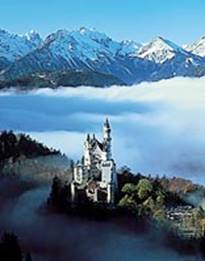
Castle of Neuschwanshtein
Wherever travellers find themselves on the Romantic Road, exceptional cuisine, delicious wines, glorious land- and city-scapes, castles, churches and fortresses inspire the appetite and the soul. Here, in one of the most charming and beautiful sections of Germany, even the most cynical and unromantic traveler cannot help but be seduced.
B) The Classic route.
Whether we pass through Erfurt, Weimar, Jena or Gotha, names such as Goethe, Schiller, Wagner and Strauss always linger on any trip through the "green heart of Germany".
The town of Eisenach is known as the home of the "Wartburg", the castle once inhabited by the famous Martin Luther. It is also, however, the city of minstrels and birthplace of Johann Sebastian Bach, whose history can be traced in the local "Bach House" museum. Eisenach is a medieval town which both Goethe and Wagner liked to visit, and it is a joy to wander through the splendid forest landscapes of this area.
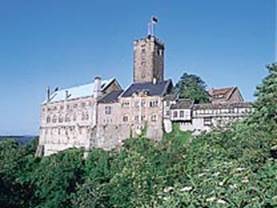
Wartburg castle
Along the classic route, Gotha is also worth a visit. The "Friedenstein Palace" and annual events such as the "Ekhof Festival" all contribute to give the town a unique touch. In Arnstadt, we reach "the gateway to the Forest of Thuringia ".
Excursions to the "Wachsenburg Fortress", "Gleichen Castle Ruins" and "Mühlburg Ruins" are highly recommended.
Next stop is Weimar, "European Cultural City 1999", which links to Goethe and Schiller. Besides "Goethe's residence", his "summer-house on the Ilm" and the "German National Theater", the "Goethe National Museum" represents a special attraction in the city. Not far from Weimar is a town called Jena, known foremost for the work and life of Friedrich Schiller and which has therefore become a popular destination.
С
) The Castle Road
Historical places and charming countryside with many romantic fortresses and fairy tale castles make the 975 km long castle route from Mannheim to Prague a varied route. The glory of time's past still has an effect today on many towns and villages.
The countryside is as varied as the history. The river Neckar winds its way through the Odenwald, the Hohenloher Ebene seems to stretch endlessly into the distance, next the rolling Frankenhöhe and then the northern part of so-called Franconian Switzerland. The legacy of the artloving Electors of the Palatinate can still be admired in towns such as Mannheim, Heidelberg or Schwetzingen.
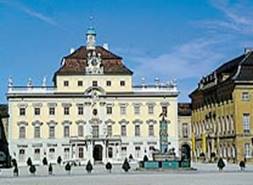
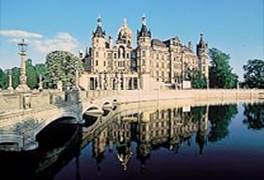
Ludwigsburg
Castle
Schwerin
Castle
On the tracks of the Palatinate Earls, Mosbach, Neckarzimmern or Bad Wimpfen are certainly well worth a visit, with their picturesque old town centres and romantic halftimbered houses. Near Heilbronn the route passes through winegrowing areas, the medieval free city of Nuremberg and the vererable towns of Rothenburg o. d. Tauber, Coburg, Kronach, Kulmbach, Bayreuth right through to Karlsbad and Marienbad, the famous spa towns, to eventually reach Prague, the capital of the Czech Republic.
All these towns with their 70 fortresses, ruins and castles line the castle route like many pearls in a row and present themselves as impressive witnesses to the past. Medieval towns, monasteries, historic buildings and cultural treasures make sure the journey along the castle route becomes a special and varied experience.
5. A Journey to Berlin
The might and scope of Prussian achievement is manifest in B erlin, one of the world's most fascinating and troubling cities. Of strategic importance since it first straddled the Spree River in the 13th century, Berlin never hogged centre stage quite like it did this century. This is the heart of Germany, its stoic beat echoing through grand public buildings, glorious museums and theatres, and its urbane restaurants, bustling pubs and raucous nightclubs. Today, the city, restored as the nation's capital, is the focus of the mammoth project of reunification and readings of Germany's mood are taken most accurately here.
Berlin is a good city to explore on foot. Take time to stroll from Alexanderplatz to the Brandenburg Gate along Unter den Linden . The nearby Kulturforum is a cluster of museums and concert halls on the south-eastern side of Tiergarten that can take days to explore.
5.1. Accommodation in Berlin
During the cultural festivals? Trade fairs and conferences? Hotels are totally booked up. The flood of tourists has increased since the opening of the wall. Unless you have alternative accommodation, a spur-of-the-moment trip to Berlin can be marred by an unpleasant or futile search for a hotel room. Reservations made several weeks in advance are definitely recommended.
Luxury Hotels
1. Bristol Hotel Kempinski (Kurfurstendamm 27) – The epitomy of traditional luxury
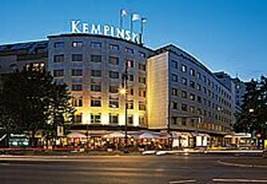
2. Grand Hyatt Berlin
In the new heart of Berlin at Potsdamer Platz, the modern design hotel Grand Hyatt Berlin is adjacent to restaurants, shopping arcades, a casino and the city's main musical theatre. The Philharmonic Theatre, New National Gallery and Picture Gallery are located in the immediate neighbourhood; the Government District, the city park Tiergarten and Berlin's greatest cultural treasures are within walking distance. The city train and subway stations at Potsdamer Platz are nearby, and Tegel International Airport is 9.4 miles/15 kilometres from the hotel.
3. Grand Hotel Esplanade ( Lutzowufer 15) - The modern, polished design emphasises functional luxury. Centrally located between the Kurfurstendammm, Unter den Linden and Potsdamer Platz, opposite the Tiergarten Park, this designer hotel captures the spirit of contemporary Berlin in a sophisticated setting. The hotel offers flexible and attractive conference and banqueting rooms for up to 450 people. Hotel room have bathroom, WC, telephone, fax, modem-connection, radio, TV, safe, minibar, sound insulation, air conditioning, restaurants, 2 bars, swimming pool, whirlpool, 3 saunas, solarium, beauty center, massage, fitness center, hairdressing salon, 6 conference rooms for up to 450 persons, garage parking, and conference boat. The “Esplanade” is a 5-star boat available for conferences, parties and private celebrations. Room facilities: Air conditioning, Minibar, Radio, Safe, Satellite TV, Sound insulation, Telephone with modem-connection.
4. Inter-Continental
(Budapester strasse 2) – the
29-04-2015, 04:24
